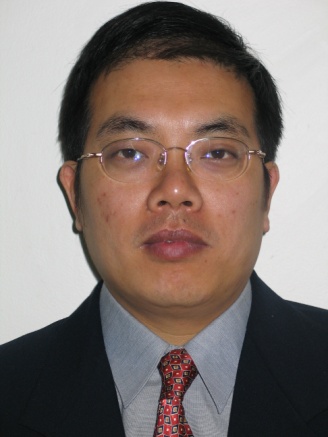Professor, tutor of a Ph.D. student
Institute of Life Sciences, Southeast University
2 Sipailou Road, Nanjing. Jiangsu Province, 210096, China
Tel: 025-83790971
Email: luwei@seu.edu.cn
Wei Lu graduated from NanjingMedicalUniversity in 1993 and received his Ph.D. from State Key Laboratory of Medical Neurobiology at ShanghaiMedicalUniversity (now FudanUniversityMedicalSchool) in 1999. He was a postdoctoral associate at Department of Biology, Massachusetts Institute of Technology from 1999 to 2003, and then at Department of Molecular and Cellular Biology, HarvardUniversity from 2003 to 2004. In 2005, Dr. Lu was appointed the full professor and director of Neurobiology Department at NanjingMedicalUniversity. In 2013, he moved to SoutheastUniversity as a professor in Key Laboratory of Developmental Genes and Human Disease, Institute of Life Sciences.
Research interest:
We are interested in mechanisms underlying the plasticity of synapses and neural circuits associated with normal brain functions (learning and memory) and with pathophysiological changes upon brain ischemia (stroke).
Activity-dependent synaptic plasticity, such as long-term potentiation (LTP) and long-term depression (LTD), was widely considered as the cellular substrate for learning and memory. Change in the number of postsynaptic receptors is one of molecular mechanisms underlying activity-dependent synaptic plasticity. Extensive studies have revealed the important role of postsynaptic AMPA receptor insertion in LTP of excitatory synapses. However, the role of activity-dependent NMDA receptor trafficking, an observation which has been detected for more than ten year, is still uncertain. Our ongoing projects aim to address the following questions: Does NMDA trafficking take a role in synaptic plasticity and learning and memory? If yes, what’s the underlying mechanism? Which motor protein is responsible for the transportation of NMDA receptor? Which biochemical events trigger the upload and release of NMDA receptor during activity-dependent synaptic plasticity, respectively?
The explosive growth of studies on neural circuits in the last ten years provide us new exciting in the field of neural plasticity as well as driving force for future investigation in plasticity of neural circuits on different scales (micro-, meso-or macro-scales). Traditionally, learning and memory, an important process involved in brain cognition, is considered ascribed to plasticity at the level of synapses, i.e., synaptic plasticity. Recently, new findings reveal structural changes in brain grey and white matter associated with learning and memory, point to changes at the level of neural circuits. In addition, under some pathophysiological conditions like brain ischemia, reorganization of neural circuits on different scales has also been demonstrated. Our ongoing projects that are just initiated aim to unravel the principles of plasticity in neural circuits associated with learning, memory and stroke. By employing a combination of various in vitro and in vivo techniques including biochemical, electrophysiological, genetic and optigenetic tools, we aim to elucidate the possible mechanisms underlying circuit plasticity at molecular, cellular and system levels.
Selected publications:
Ren SQ., Yan JZ., Zhang XY., Bu YF., Pan WW.,Yao W., Tian T. and Lu W.*, PKCλ Is Critical in AMPA Receptor Phosphorylation and Synaptic Incorporation during LTP, EMBO Journal, 2013, 32:1365-1380
Yao W., Ji F., Chen Z., Zhang N., Ren SQ., Zhang XY., Liu SY. and Lu W.*,Glycine Exerts Dual Roles in Ischemic Injury Through Distinct Mechanisms,Stroke,2012;43(8):2212-2220
Ma TF., Zhao XL., Cai L., Zhang N., Ren SQ., Ji F., Tian T. and Lu W.*,Regulation of Spike Timing-Dependent Plasticity of Olfactory Inputs in Mitral Cells in the Rat Olfactory Bulb,PloS ONE,2012;7(4):e35001
Chen RQ., Wang SH., Yao W., Wang JJ., Ji F., Yan JZ., Ren SQ., Chen Z., Liu SY., and Lu W.*,Role of Glycine Receptors in Glycine-Induced LTD in Hippocampal CA1 Pyramidal Neurons,Neuropsychopharmacology,2011;36(9):1948–1958
Yan JZ., Xu Z., Ren SQ., Hu B., Yao W., Wang SH., Liu SY., and Lu W.*,Protein Kinase C Promotes NMDA Receptor Trafficking by Indirectly Triggering CaMKII Autophosphorylation,Journal of Biological Chemistry,2011;286(28):25187-25200
6. Zhou L, Li F, Xu HB, Luo CX, Wu HY, Zhu MM, Lu W, Ji X, Zhou QG, Zhu DY.*,Treatment of cerebral ischemia by disrupting ischemia-induced interaction of nNOS with PSD-95,Nature Medicine,2010;16(12):1439-1443
Peng Y., Zhao J., Chen RQ., Xu Z., Gu QH., Liu SY., Chen Z., and Lu W.*,Distinct trafficking and expression mechanisms underlie LTP and LTD of NMDA receptor-mediated synaptic responses,Hippocampus,2010;20(5):646-658
Xu Z., Chen RQ., Gu QH., Yan JZ., Wang SH., and Lu W.*,Metaplastic regulation of LTP/LTD threshold by activity-dependent changes of NR2A/NR2B ratio,Journal of Neuroscience,2009;29(27):8764-8773
Lu W. and Constantine-Paton M. Eye-opening rapidly induces potentiation and refinement in visual neurons. Neuron,2004;43: 237-249(Comments in Nature Neuroscience 2005;8: 9-10)
Miskevich, F., Lu W., Lin S.Y., and Constantine-Paton M. Interaction between metatropic and NMDA subtypes of glutamate receptors in sprout suppression at young synapses. Journal of Neuroscience 2002 ; 22: 226-238.





